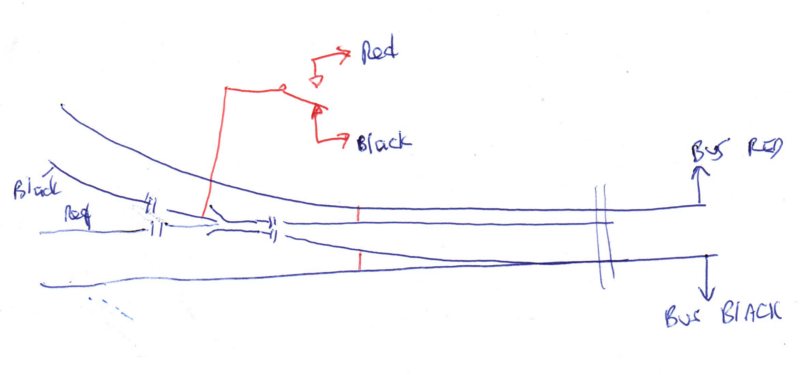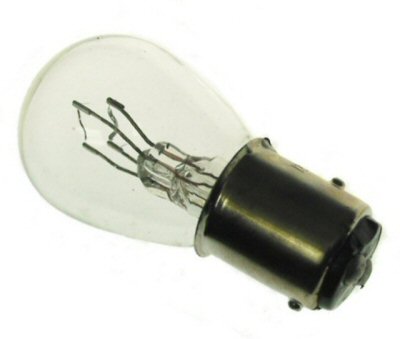Peco Electrofrog L/ H point
Posted
#240492
(In Topic #13319)
Full Member
Appears to be dead
Hi All. I really don’t believe it. I have modified the point as per instructions, I have cut out the underside wires, soldered a wire from the stock rail to the switch rail, I am using insulated joiners on the frogs.And when a Loco arrives at the point it stops dead, I even tried electrical jumpers in addition. And still nothing, I got out my “ trusty led tester gadget from Gaugemaster “ , wouldn’t you know that indicated that the point was dead.I phoned Peco technical advice expert, he was off today. Please advise. Best wishes Kevin
 Last edit: by Passed Driver
Last edit: by Passed Driver
Staying on the thread Kevin.
Posted
Full Member
 Last edit: by RFS
Last edit: by RFS
Robert
Posted
Full Member
Staying on the thread Kevin.
Posted
Full Member
Any photos Kevin?
Terry
Posted
Site staff


the red wiring is what you should have done so the frog is not dead. The red switch would be part of your slide switch that operates the turnout tiebar.
Ron
NCE DCC ; 00 scale UK outline.
NCE DCC ; 00 scale UK outline.
Posted
Full Member
Have you used a multimeter to check current and polarity? Stopping dead sounds like the switch is wired incorrectly. Positive wheel meets negative frog. Does the controller light up? Does it run through with a dead frog? Is the slide switch toasted? Most are low amp, a short could cream cracker it.
Nigel
©Nigel C. Phillips
Posted
Full Member
Staying on the thread Kevin.
Posted
Full Member
Staying on the thread Kevin.
Posted
Full Member
Staying on the thread Kevin.
Posted
Full Member
Staying on the thread Kevin.
Posted
Site staff

But if you are not good with a multimeter, then a 12v car globe will do.
Ron
NCE DCC ; 00 scale UK outline.
NCE DCC ; 00 scale UK outline.
Posted
Full Member
Staying on the thread Kevin.
Posted
Full Member
It stops before the frog? Do you mean at the junction between the closure rails and the frog? what about the other exit side. If it stops there the frog section is dead.
There are plenty of instructions on the web for a multimeter. 5 minutes prodding and poking and you will know exactly where the fault is. The points, the wiring or the switch. IMO a must have piece of kit. And very easy to use.
Check the points out of the box first. Then after wiring. Then after installation. Then ballast, not before.
If the turnout came with a pre-installed frog wire that could be the issue. It comes adrift very easily as it uses tinned wire. And to make sure insulate it with some heat shrink.
Nigel
©Nigel C. Phillips
Posted
Full Member
Staying on the thread Kevin.
Posted
Full Member
Coming which way does the "stop" occur ?
If it's from the toe, then it seems the point is dead. If it's from the frog end, then it's the frog.
If you're using insulated joiners on the toe end, do you have a feed to the point itself ? Have you wired both closure rails to the stock rails ? If not, then it could be a lack of contact there.
If every bit of metal on the point is connected to some kind of a feed (direct or via the switch), then it has to be the switch. That's the only place there is a "missing link" …………………………….. :???:
If changing the switch wires causes a short, then your original wiring was correct but there is a missing supply somewhere.
It would be so much easier for all concerned, if you could post some photos - it's not difficult. Trying to imagine what you've done is nigh on impossible but with a photo, we'd spot the problem immediately…………………………….
'Petermac
Posted
Full Member
Staying on the thread Kevin.
Posted
Site staff

Hi Ron. T? I don’t know what you mean by a 12 volt car globe?Best wishes Kevin
12v car globe is what is used for head & tail lights in cars etc
Ron
NCE DCC ; 00 scale UK outline.
NCE DCC ; 00 scale UK outline.
Posted
Full Member
Staying on the thread Kevin.
Posted
Site staff

http://www.members.optusnet.com.au/nswmn/1156.htm
similar to DC days
Ron
NCE DCC ; 00 scale UK outline.
NCE DCC ; 00 scale UK outline.
Posted
Site staff

If the toe of the point is connected to the adjacent piece of track with normal rail joiners, even relying on them for connectivity, I would expect a loco approaching the toe to continue onto the point, however you've wired the point.
Ed
1 guest and 0 members have just viewed this.


